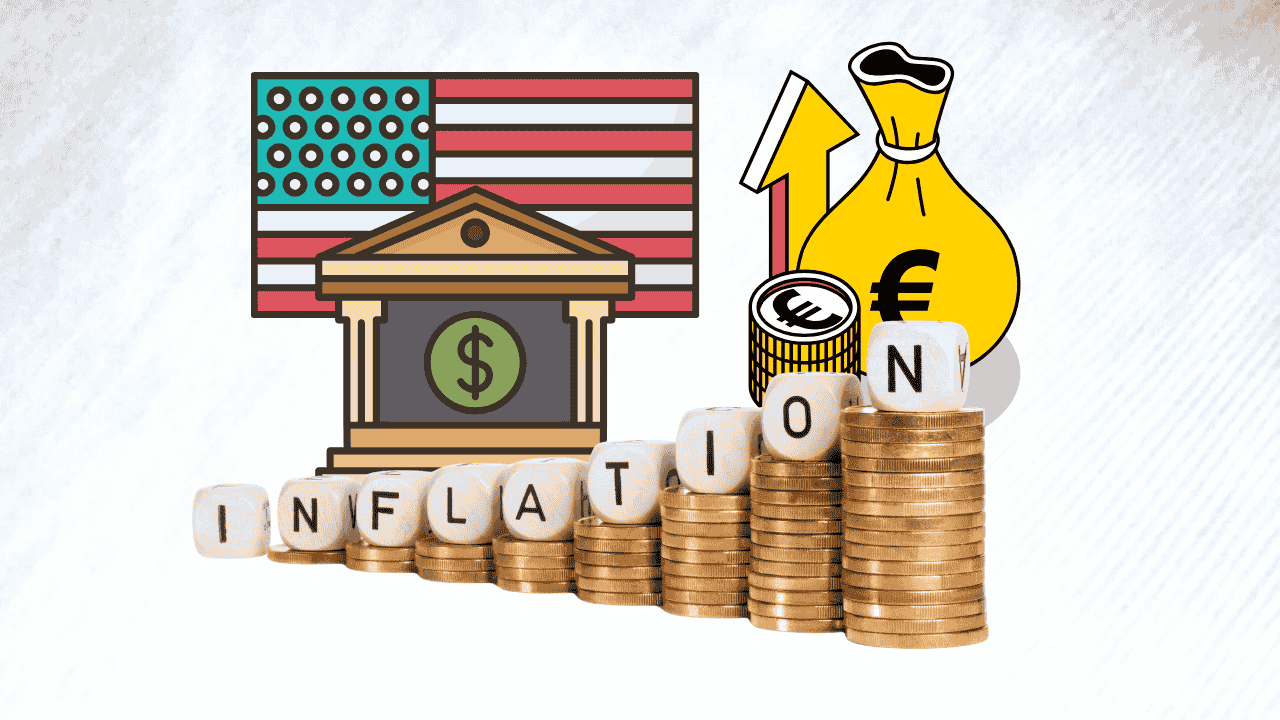All eyes are on the next inflation report, which drops Tuesday morning and is already setting up to stir both political and market reactions. The numbers will show how fast consumer prices rose in June and whether inflation is easing fast enough to keep borrowing costs from rising again later this year.
Key Takeaways
- The June inflation report is expected to show slight improvement, but core prices may stay elevated, keeping pressure on the Federal Reserve to stay cautious.
- Tariff talk and political debate are adding new risks to the inflation outlook, especially with trade policies back in the spotlight.
- The Fed is unlikely to move quickly unless inflation drops more consistently, which means borrowing costs for businesses and households may stay high into fall.
- This is a good time for business owners to review credit terms, manage cash flow tightly, and prepare for continued uncertainty around prices and lending.
Inflation data lands on Tuesday; expect a bit of drama
The report is being closely watched by the Federal Reserve, economists, business owners, and households alike. It’s also drawing early commentary from the White House and President Donald Trump, who both see inflation not just as an economic issue but a political one.
Analysts are expecting the numbers to show some improvement, with headline inflation cooling slightly year over year. But month-to-month, core prices especially for housing and services may remain sticky. If that happens, it could complicate the Fed’s next move and reinforce the idea that price pressures aren’t going away as fast as hoped.
At the same time, the report comes just as trade and tariff headlines are back in focus. President Trump has proposed a new round of tariffs and some economists worry those moves could fuel another wave of cost increases. That possibility is now baked into how the markets and policymakers will interpret this week’s inflation reading.
Tariffs, Trump, and trouble: why this report matters more than usual
It’s not just the inflation number itself that’s drawing attention, it’s what it signals in a political year already thick with tension. Trump’s recent remarks on new 10% tariffs across all imports with even higher rates for Chinese goods, have some analysts warning of inflation risks returning in 2025 if those ideas become policy.
The Biden administration, during his term, kept most tariffs in place from the previous administration but has tried to avoid major new trade disruptions. Now, with both sides presenting very different approaches to global trade and inflation management, Tuesday’s data could become part of a larger public debate over which strategy is working.
Even small changes in the report can carry weight. A hotter-than-expected inflation number might lead to renewed pressure on the Federal Reserve to hold off on rate cuts. A cooler reading, on the other hand, could strengthen calls for easing, especially with credit markets already tight for both consumers and businesses.
Economists watching the data say one of the biggest swing factors this month will be housing costs. Rents have leveled off in some markets but remain elevated in others. Meanwhile, energy prices have stayed relatively stable, and used car prices once a major driver of core inflation have cooled.
The Fed’s next interest rate meeting isn’t until September, but markets will be pricing in expectations almost immediately after the release. What the numbers say, and how they compare to forecast, could shape both monetary policy and political talking points in the weeks to come.
What the economists are saying ahead of the number
Most economists expect this month’s report to show that inflation is still moving in the right direction but maybe not fast enough to call it “done.” According to a recent Bloomberg survey, the consensus is that headline inflation will come in around 3.0% year-over-year, with core inflation, which strips out food and energy, expected to land closer to 3.4%.
That would be an improvement from the earlier part of the year, but still well above the Federal Reserve’s 2% target. The real question is whether month-to-month readings are slowing enough to justify a shift in interest rate policy.
Some areas are showing signs of relief. Supply chains are stable again, and food prices have moderated compared to the sharp increases seen in 2022 and early 2023. Even airfares and hotel rates which jumped during last year’s travel boom, have begun to flatten in some regions.
But not everything is cooling. Health care services, insurance premiums, and rent remain elevated. These categories carry weight in the core inflation calculation, and their stickiness is one reason the Fed has held back from cutting rates too soon.
The “supercore” inflation which focuses on core services excluding housing is one of the most watched indicators inside the Federal Reserve right now, as noted in the ABC News article. If that reading stays strong, even with headline inflation down, the central bank may keep its options open heading into September.
How the Federal Reserve might react if inflation stays stubborn
The Federal Reserve has made it clear it wants to see sustained improvement in inflation before making any major changes to interest rates. Right now, the federal funds rate sits in a range of 5.25% to 5.50%, and while there’s been talk of potential rate cuts later this year, the central bank hasn’t made any promises.
If the inflation data this week shows limited progress or worse, any reversal, it could push the Fed to delay or reduce the size of future cuts. Markets have already adjusted their expectations, with many traders now betting on just one rate cut in late 2025, down from two or three predicted earlier this year.
At the same time, the Fed is also watching how its current policy is affecting the broader economy. Small businesses and middle-income households are feeling the pinch from higher borrowing costs, and credit conditions have tightened significantly. That’s especially visible in small business lending and auto loan markets, where approval rates have dropped even for qualified borrowers.
Fed Chair Jerome Powell has said repeatedly that the central bank would rather move too slowly than too quickly meaning they’re more likely to hold rates higher for longer than to risk inflation bouncing back.
So even if headline inflation comes in lower this month, the Fed may still want more evidence before easing up. One soft number won’t be enough. They’ll want to see a trend.
What it means for your wallet and business expenses
Whether inflation ticks up or down this month, the effects aren’t just academic. They show up in grocery bills, utility costs, insurance premiums, and how much businesses have to pay for supplies, rent, and labor. The numbers in the report often lag reality, but they still signal where things might be headed next.
If inflation stays sticky, households could see slower relief at the pump or in the checkout line. A higher inflation reading can also affect how lenders set interest rates on credit cards, personal loans, and business lines of credit. That’s especially important now, with many small-business owners already facing higher monthly payments on floating-rate loans.
On the flip side, if the report shows clear improvement, it could help improve confidence and support slower price growth across sectors. It might also encourage the Fed to step back a bit sooner, which could eventually translate to slightly lower borrowing costs.
For now, the best strategy for households and businesses is to stay alert and flexible. Costs in some categories may level off, but others like property insurance and services may stay elevated regardless of the inflation headline. Building some room in the budget and watching how interest rates move over the next few months could make a difference by year’s end.
What you can do now: actions to take after the report
Whether the inflation number comes in hot, cool, or just flat, it’s a signal worth paying attention to not just for headlines, but for planning. Businesses and households that respond early tend to be better positioned when financial conditions shift.
For small-business owners, a strong inflation reading could mean another few months of tight credit and higher borrowing costs. If you’re planning to apply for a loan or refinance debt, it might be worth locking in terms sooner rather than later, especially if rates climb again. For those with adjustable-rate loans, it’s also a good time to review cash flow and stress-test monthly expenses in case payments rise again this fall.
If the number comes in softer than expected, it may not immediately trigger rate cuts, but it could be a sign that the Fed is moving closer to easing. That doesn’t mean you should rush to borrow, but it might give some space for longer-term planning. Businesses might consider delaying fixed-cost increases, or revisiting stalled projects if borrowing conditions ease in the months ahead.
On the household side, inflation data affects everything from mortgage rates to credit card APRs. If you’re carrying balances or planning big purchases, a stable or lower inflation trend could make timing easier. But if prices surprise to the upside, expect interest-sensitive areas like auto loans and personal finance to get more expensive again.
Here are a few simple things to consider after this report:
After the inflation report drops:
- Recheck your loan rates or refinance timing
- Watch for lender changes in credit criteria
- Revisit household or business budgets for price-sensitive items
- Monitor Fed comments in the days following the release
The report might not bring big changes overnight but it helps shape what’s coming next.
Quick snapshot: inflation tracker by the numbers
Here’s a look at some key inflation metrics that are expected in this week’s report along with how they compare to earlier trends.
Indicator | June 2025 (Expected) | May 2025 | April 2025 |
Headline CPI (year-over-year) | 3.0% | 3.3% | 3.4% |
Core CPI (year-over-year) | 3.4% | 3.6% | 3.6% |
Monthly CPI change | 0.2% | 0.1% | 0.3% |
Core services CPI | 4.8% | 5.0% | 5.2% |
Shelter inflation (YoY) | 5.1% | 5.4% | 5.5% |
Related Articles
What's Next?
You Might Also Like
In our commitment to ensuring accuracy and credibility, we prioritize the use of primary sources to support our reporting. This includes white papers, government data, original reporting, and interviews with industry experts. We also reference original research and findings from reputable publishers when appropriate. To learn more about the standards we uphold in producing accurate and unbiased content, please refer to our editorial policy.


















